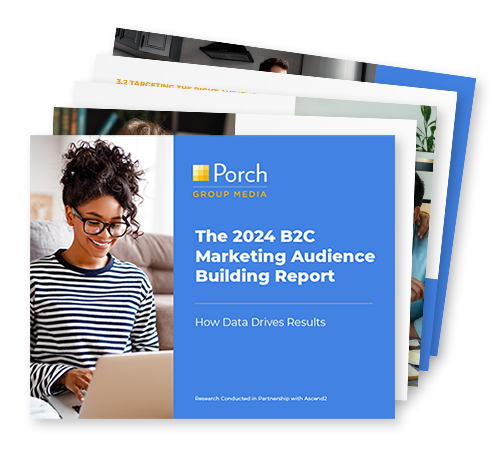Integrating first-party data with email marketing is a smart and strategic move that can significantly enhance the effectiveness of your email campaigns.
First-party data, which you collect directly from your customers and prospects, provides valuable insights into their behaviors, preferences, and interactions with your brand.
When used with email marketing, first-party data enables you to create highly personalized and targeted campaigns that resonate with your audience.
9 Reasons Why First-Party Data is Valuable
1. Reliable Customer Insights
Since first-party data is collected directly from your customers or users, it generally is more accurate and reliable than other forms of data.
Since it comes directly from interactions with your brand, it provides an authentic and up-to-date view of customer behavior, preferences, and engagement.
2. Ownership and Control
You have full ownership and control over your first-party data. This means you can use it as you see fit, without relying on third-party sources or intermediaries.
You can implement data protection measures and data handling practices that align with your brand’s values and privacy standards.
3. Improved Personalization
First-party data enables highly targeted and personalized marketing efforts.
By understanding individual customer preferences and behaviors, you can create tailored content, product recommendations, and offers that resonate with each recipient.
4. Deprecation of Third-Party Cookies
With the phase-out of third-party cookies, the role of first-party data is increasingly important for businesses. First-party data allows companies to continue gathering insights directly from their own interactions with customers, ensuring they have a stable source of information.
5. Deeper Customer Insights
Analyzing first-party data provides deep insights into customer behaviors and trends.
This data can help you identify patterns, preferences, and pain points, allowing you to make informed decisions about product development, marketing strategies, and customer service improvements.
6. Cost-Efficient
First-party data is a cost-effective resource. First-party data is generated as a natural byproduct of your existing business operations.
7. Privacy Compliant
In an era of heightened data privacy concerns and regulations, first-party data collection is more likely to comply with data protection laws since it typically involves obtaining explicit consent from users.
This compliance builds trust with your audience and minimizes the risk of legal complications.
8. Flexible and Customizable
First-party data is highly adaptable. You can customize your data collection methods to gather the specific information you need to meet your business objectives.
This flexibility allows you to adapt to changing market conditions and customer preferences.
9. Competitive Advantage
Companies that effectively collect and leverage first-party data gain a competitive advantage.
They can create more relevant and personalized customer experiences, which can differentiate them from competitors and lead to increased market share and customer loyalty.
How to Integrate First-Party Data into Your Email Marketing Strategy
Segmentation for Targeted Email Campaigns
Segmentation is the process of dividing your email list into distinct groups based on specific criteria. Leveraging your first-party data, you can segment your email list to create highly targeted campaigns.
Demographic Segmentation
First-party data often includes demographic information about your customers, such as age and location.
You can use this data to create segmented email campaigns that address the unique characteristics and interests of different demographic groups. For example:
- Send age-specific promotions or content that aligns with the preferences of different age groups.
- Tailor email content to the local weather or events in the recipient’s region.
Behavioral Segmentation
Behavioral segmentation is one of the most powerful ways to leverage first-party data. It involves analyzing how recipients have interacted with your brand, including their past purchases, browsing history, email engagement, and more.
With behavioral segmentation, you can create highly targeted campaigns, such as:
- Abandoned Cart Emails: Send reminders and incentives to customers who left items in their cart but didn’t complete the purchase.
- Product Recommendations: Suggest products based on a customer’s past purchase history or browsing behavior.
- Engagement-Based Emails: Segment your list by email open and click behavior, sending different content or re-engagement campaigns to different groups.
Purchase History and Preferences
Your first-party data includes a wealth of information about your customers’ past purchases, product preferences, and buying patterns.
This data is invaluable for creating email campaigns, such as:
- Cross-Selling and Upselling: Recommend related or upgraded products to customers based on their purchase history.
- Specialized Offers: Tailor promotions to specific product categories that a customer has shown interest in.
- Loyalty Programs: Send exclusive rewards or discounts to customers who frequently purchase from your brand.
Lifecycle Stages
Consider where your subscribers are in their customer journey, and use first-party data to create email campaigns specific to their stage:
- Welcome Emails: Welcome new subscribers with a warm introduction and encourage them to explore your brand further.
- Nurture Campaigns: For leads, send a series of educational and engaging emails to nurture them toward a conversion.
- Customer Retention: Keep existing customers engaged with loyalty rewards, exclusive content, and product updates.
Content Personalization
Use your first-party data to customize the content within your emails to better engage with your audience:
- Address the recipient by their first name for a personalized touch.
- Include dynamic content blocks that change based on a recipient’s interests or behavior.
- Craft email copy that speaks to the recipient’s preferences, needs, and pain points.
Conclusion
Incorporating first-party data into your email marketing strategy can elevate your campaigns from generic messages to highly personalized and effective communication. By delivering the right content to the right people at the right time, you can build stronger customer relationships and drive better results for your business.





